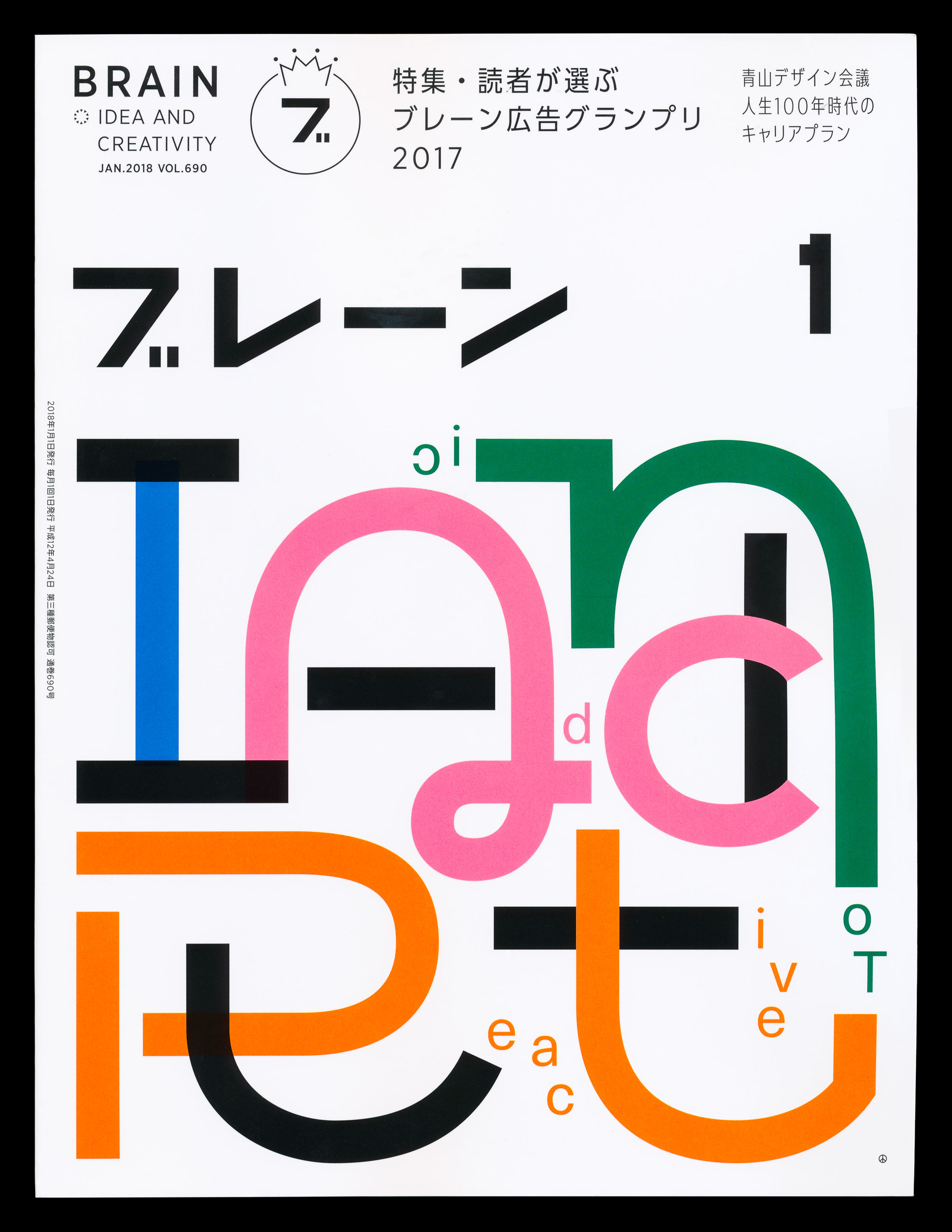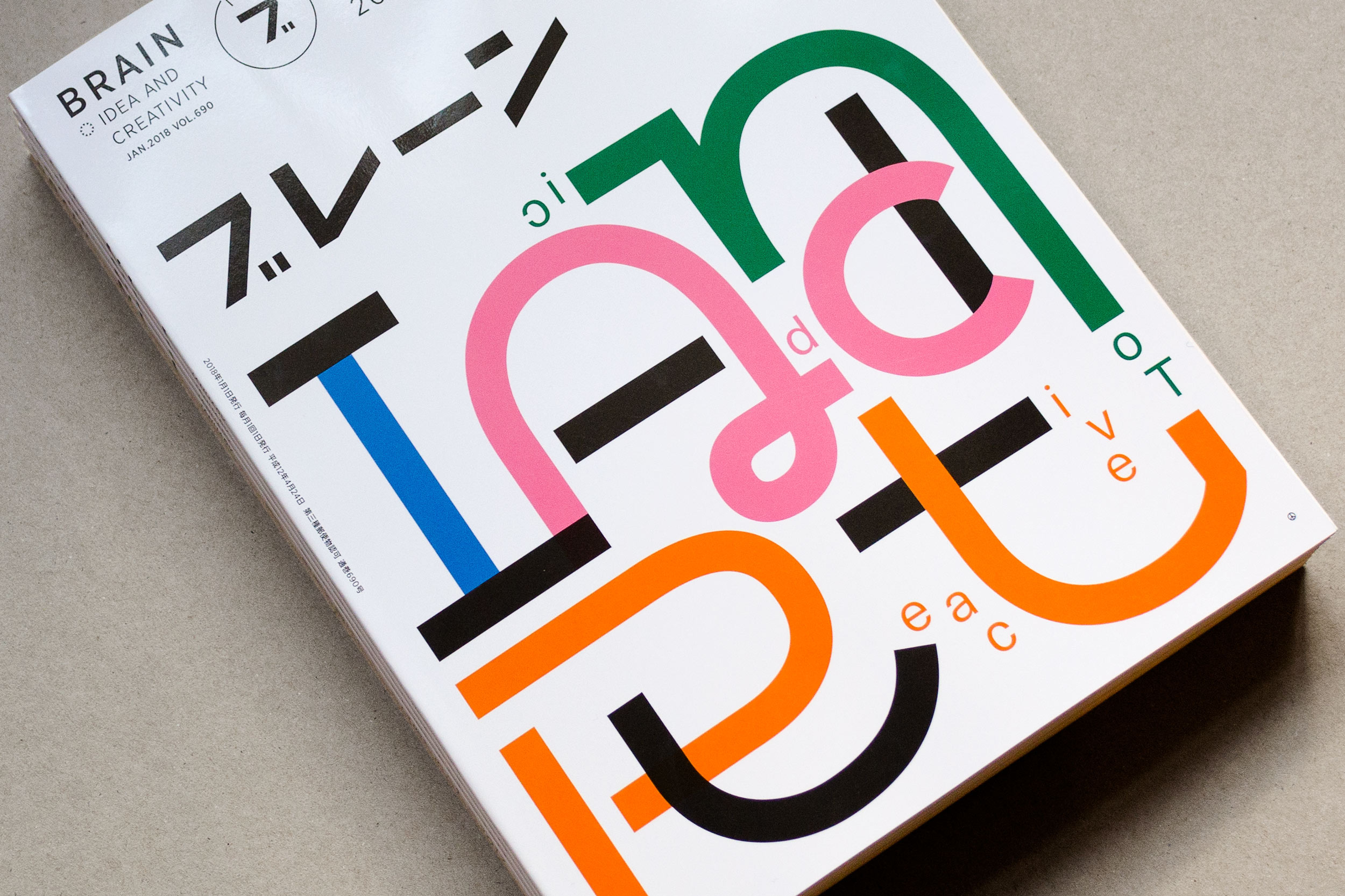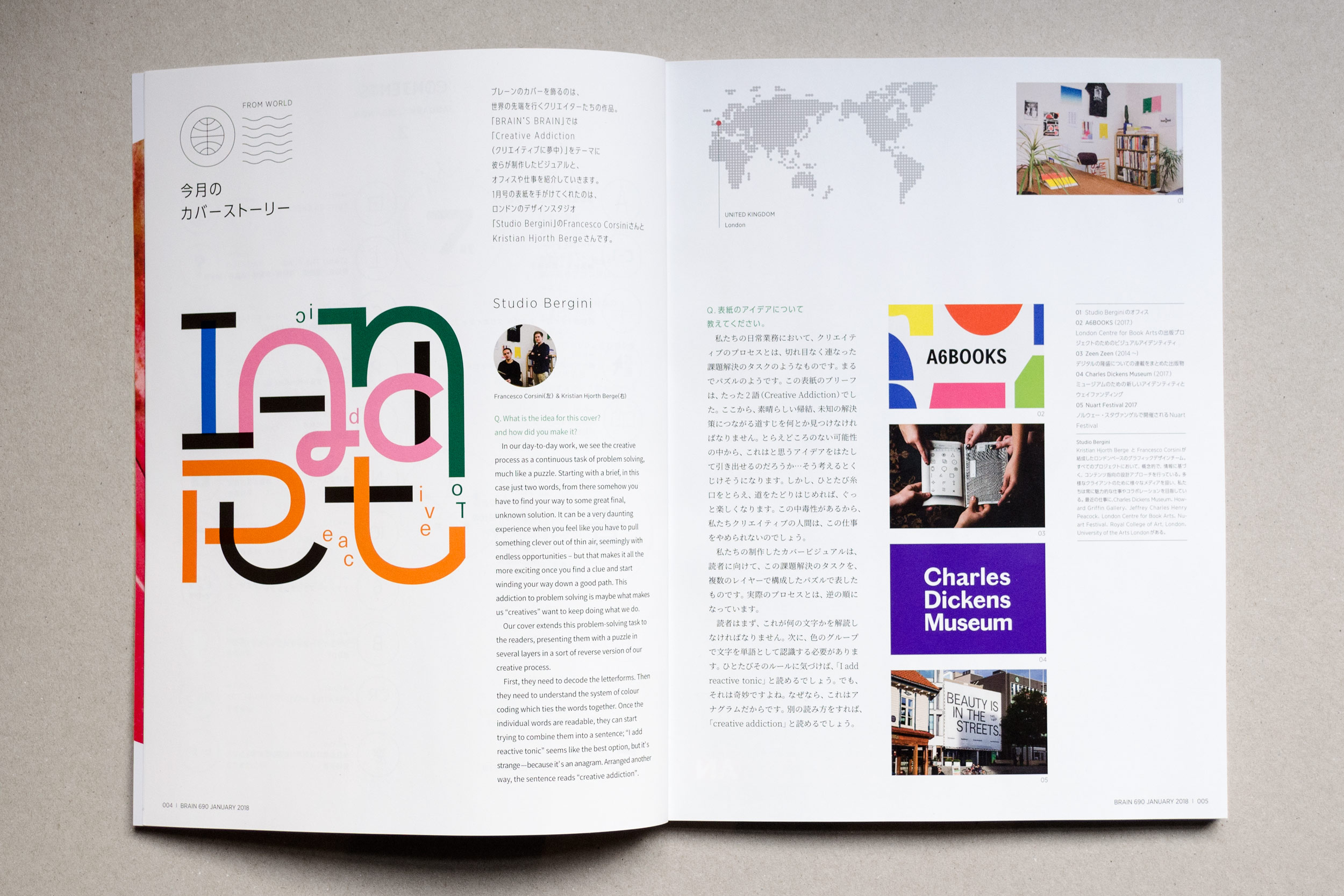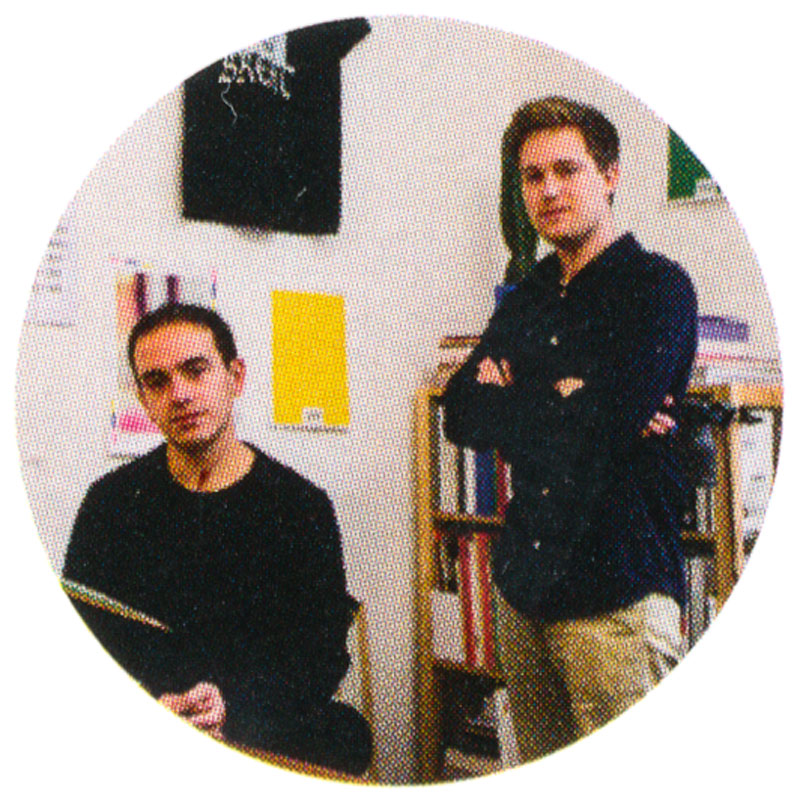
Brain Magazine cover, 2017
Cover design commission responding to the theme Creative Addiction and a short interview, for the January 2018 issue of Japanese BRAIN Magazine, published 1 December 2017.
BRAIN: What is the idea for this cover? And how did you make it?
SB: In our day-to-day work, we see the creative process as a continuous task of problem solving, much like a puzzle. Starting with a brief, in this case just two words, from there somehow you have to find your way to some great final, unknown solution. It can be a very daunting experience when you feel like you have to pull something clever out of thin air, seemingly with endless opportunities – but that makes it all the more exciting once you find a clue and start winding your way down a good path. This addiction to problem solving is maybe what makes us “creatives” want to keep doing what we do.
Our cover extends this problem-solving task to the readers, presenting them with a puzzle in several layers in a sort of reverse version of our creative process.
First, they need to decode the letterforms. Then they need to understand the system of colour coding which ties the words together. Once the individual words are readable, they can start trying to combine them into a sentence; “I add reactive tonic” seems like the best option, but it’s strange—because it’s an anagram. Arranged another way, the sentence reads “creative addiction”.




Brain Magazine cover, 2017
Cover design commission responding to the theme Creative Addiction and a short interview, for the January 2018 issue of Japanese BRAIN Magazine, published 1 December 2017.
BRAIN: What is the idea for this cover? And how did you make it?
SB: In our day-to-day work, we see the creative process as a continuous task of problem solving, much like a puzzle. Starting with a brief, in this case just two words, from there somehow you have to find your way to some great final, unknown solution. It can be a very daunting experience when you feel like you have to pull something clever out of thin air, seemingly with endless opportunities – but that makes it all the more exciting once you find a clue and start winding your way down a good path. This addiction to problem solving is maybe what makes us “creatives” want to keep doing what we do.
Our cover extends this problem-solving task to the readers, presenting them with a puzzle in several layers in a sort of reverse version of our creative process.
First, they need to decode the letterforms. Then they need to understand the system of colour coding which ties the words together. Once the individual words are readable, they can start trying to combine them into a sentence; “I add reactive tonic” seems like the best option, but it’s strange—because it’s an anagram. Arranged another way, the sentence reads “creative addiction”.


